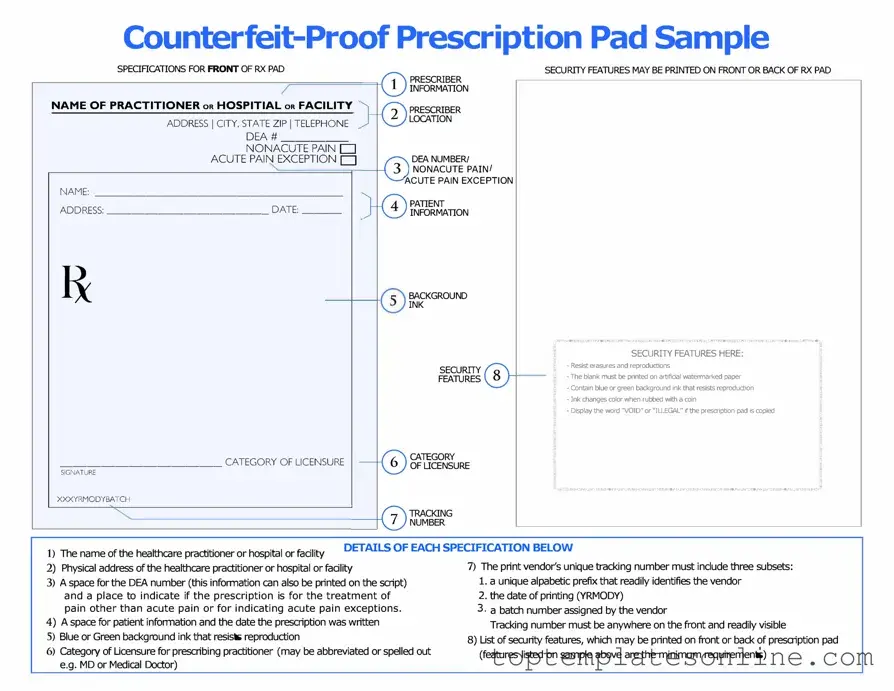The Prescription Pad form plays a crucial role in the healthcare system, serving as a primary tool for healthcare providers to communicate medication needs to pharmacies. This form typically includes essential details such as the patient's name, date of birth, and medication information, including dosage and frequency. It also captures the prescribing physician's information, ensuring that the pharmacy can verify the prescription's authenticity. Additionally, the form often features sections for refills and special instructions, allowing for tailored patient care. Understanding how to properly fill out and utilize the Prescription Pad form is vital for both healthcare professionals and patients, as it streamlines the process of obtaining necessary medications and enhances overall patient safety. By adhering to best practices when using this form, providers can minimize errors and ensure that patients receive the right treatment at the right time.
